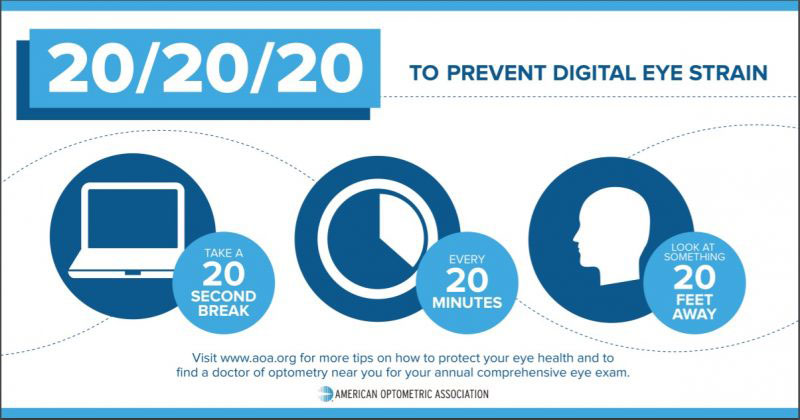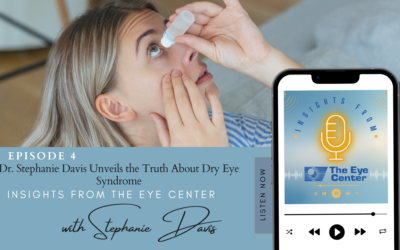The average American spends about seven hours a day on electronic devices. Nearly 70% of those people experience an eye condition called computer vision syndrome (CVS). CVS is a group of eye and vision-related issues resulting from prolonged computer, tablet, or phone use. People who spend two or more continuous hours on an electronic device daily are at a higher risk of developing CVS. In this day and age, 83% of Americans spend at least that amount of time on electronics as reported by The Vision Council, many of them suffering from CVS.
What are the symptoms of computer vision syndrome?
Being aware of computer vision syndrome symptoms and getting your yearly eye exam can help prevent serious damage related to digital eye strain. The most common symptoms include:
- Tired eyes
- Fluctuating or blurry vision (even blurry vision when driving after work)
- Dry eyes
- Double vision
Eye strain from CVS can lead to dull headaches, typically around the eyes. In some cases, symptoms can result from uncorrected vision or the inability of the eyes to focus or coordinate together. Even minor uncorrected vision problems can lead to discomfort and poor work performance.
Diagnosing computer vision syndrome
At The Eye Center, our experts can diagnose computer vision syndrome during a comprehensive eye exam in Pembroke Pines. The first step is to take a very careful history. We’ll ask if you have symptoms such as headaches, blurred vision, burning, or even itching. Our eye doctor will then test visual acuity to see if you need prescription computer glasses. Lastly, we test the eyes to see how well they focus and work together.
Treatment for computer vision syndrome
Treatment will depend on the results of your eye exam. Sometimes we prescribe computer glasses to use while staring at computer screens. At The Eye Center, we recommend a special coating on the glasses called “blue light filter.” Blue light is a harmful visible light emitted from all electronic devices. Blue light disrupts sleep which in turn can affect work performance. It also can impair memory and lead to poor attention span. Lastly, long-term exposure can result in certain eye diseases such as cataracts and macular degeneration.
Using proper lighting, controlling glare on digital devices, and establishing a proper working distance are other ways to prevent computer-related eye strain. The preferred distance for computers should be about arm’s length or between 20–28 inches from your eyes to the screen. You can try using bright lighting overhead to reduce eye strain as well as a filter for your screen or anti-glare glasses to reduce the glare on your computer.
You may find it helpful to increase the text size of your device to increase contrast and definition. We encourage the 20-20-20 rule: taking a 20-second break every 20 minutes while viewing something at least 20 feet away. Also, remember to keep blinking. Blinking promotes the excretion of special oils that prevent dry eye. Normally we blink about 18 times per minute but that is reduced to half when viewing electronics. Artificial tears or lubricating drops may help in these cases.
If you are experiencing computer-related eye strain and symptoms, talk about solutions with your eye doctor. Being aware of computer vision syndrome and receiving a proper evaluation by an eye care specialist is the best type of preventative medicine. Contact us today to schedule an eye exam and learn how to find relief.





